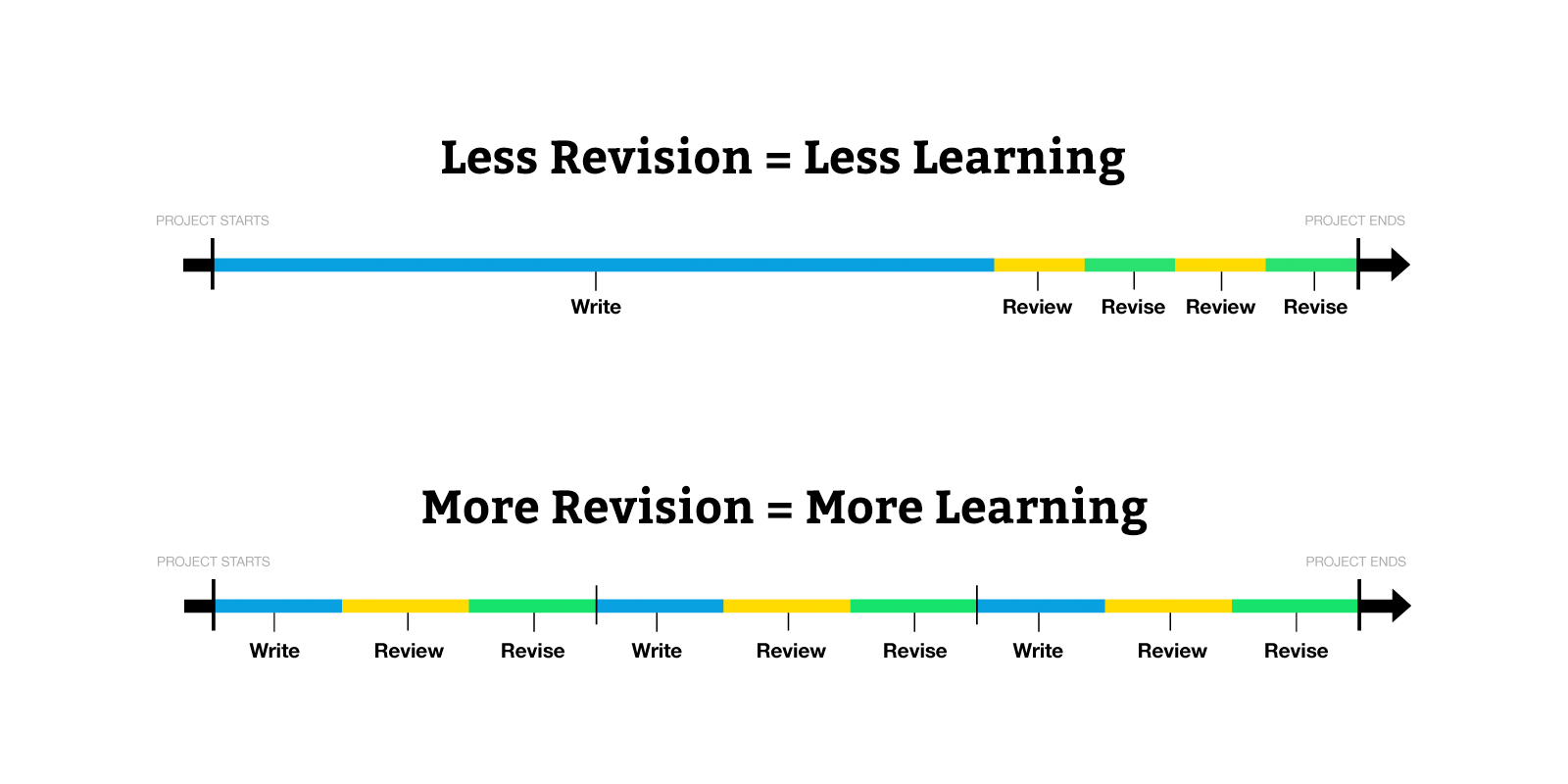Improvement depends on practice. In practice, frequency matters.
Becoming a better reviewer takes practice. Because it happens between stages of students’ (graded) work as writers, giving helpful feedback gets short shrift as a learning goal.

The two timelines emphasize that students submitting small bits of writing for targeted peer feedback are much more likely to revise than students submitting mostly complete drafts. This timeline also shows the importance of reviewers having multiple opportunities to practice giving feedback.
What should reviewers practice?
Giving helpful feedback is cognitively demanding. It’s helpful to provide reviewers with a set of moves to keep them focused on what they are expected to say to writers. For example, the describe-evaluate-suggest moves help reviewers know what each comments should do:
- Describe: Say in your own words what the writer is trying to say or what the assignment demands
- Evaluate: Say how well the draft meets criteria or expectations
- Suggest: Offer a question or a strategy related to the text/process
Such moves structure how reviewers make a case for revision to writers. To make a good case for revision, reviewers go through several thinking steps:
- Detect a problem related to criteria through close reading
- Localize the problem in the text by noticing where the ideas, words, or structure falter
- Recall and select a solution or a strategy or procedure to improve the text
The describe-evaluate-suggest moves help reviewers make a good case for revision because the moves encourage problem-solution thinking.
How often should reviewers practice?
How many reviews will it take for the least skilled reviewers to consistently give helpful problem-solution feedback? That’s the minimum practice schedule.
Mind the gap between reviews because less time between practice rounds helps reviewers improve on the fundamentals of giving helpful feedback.

